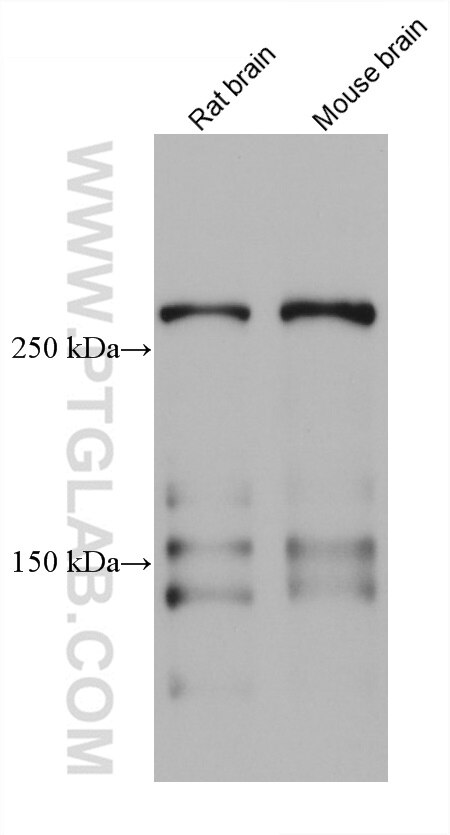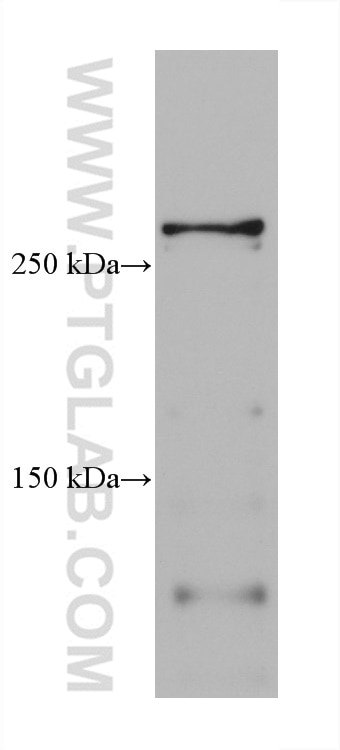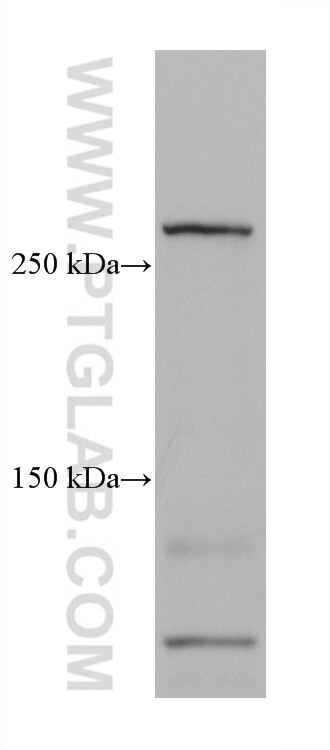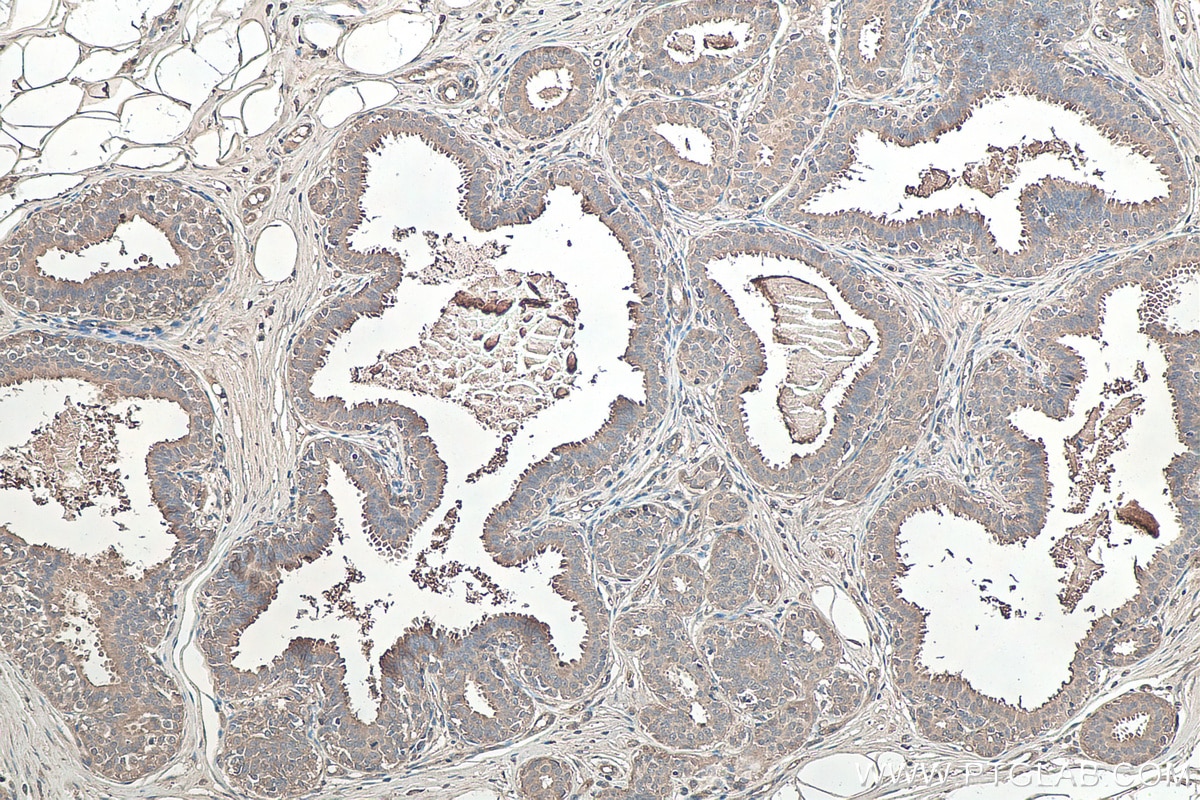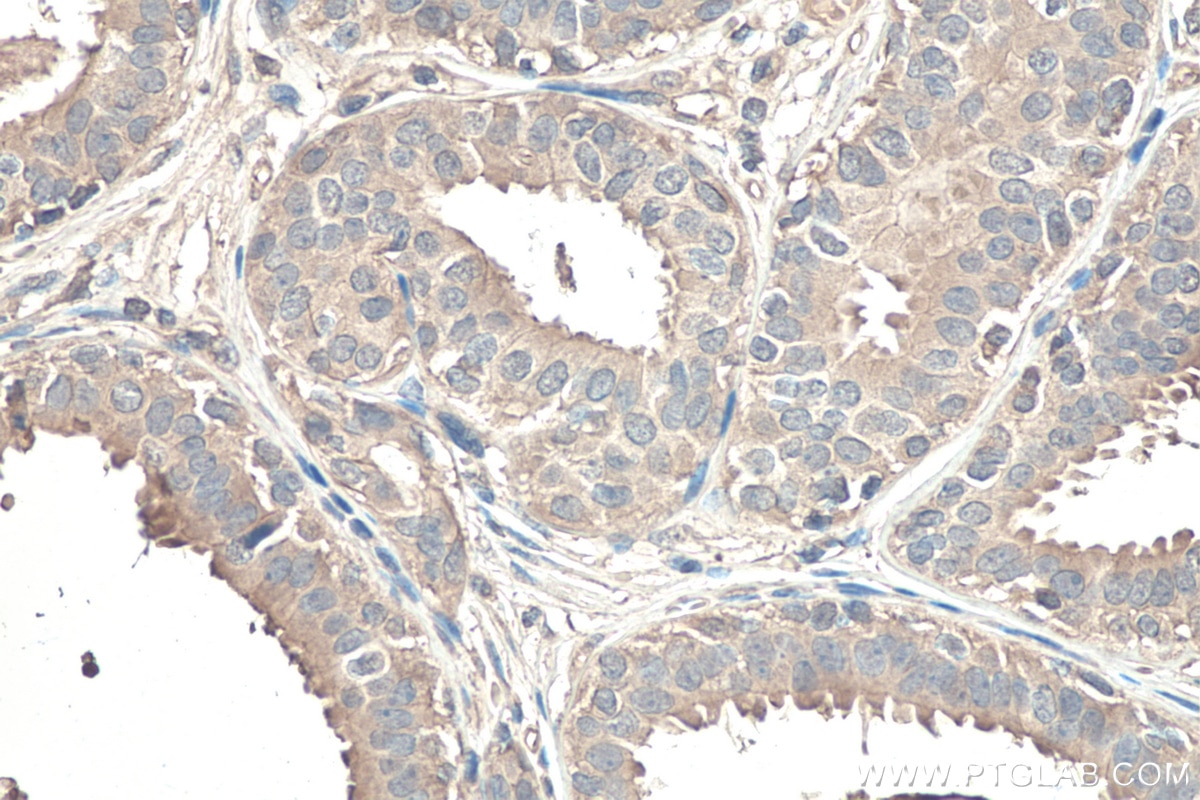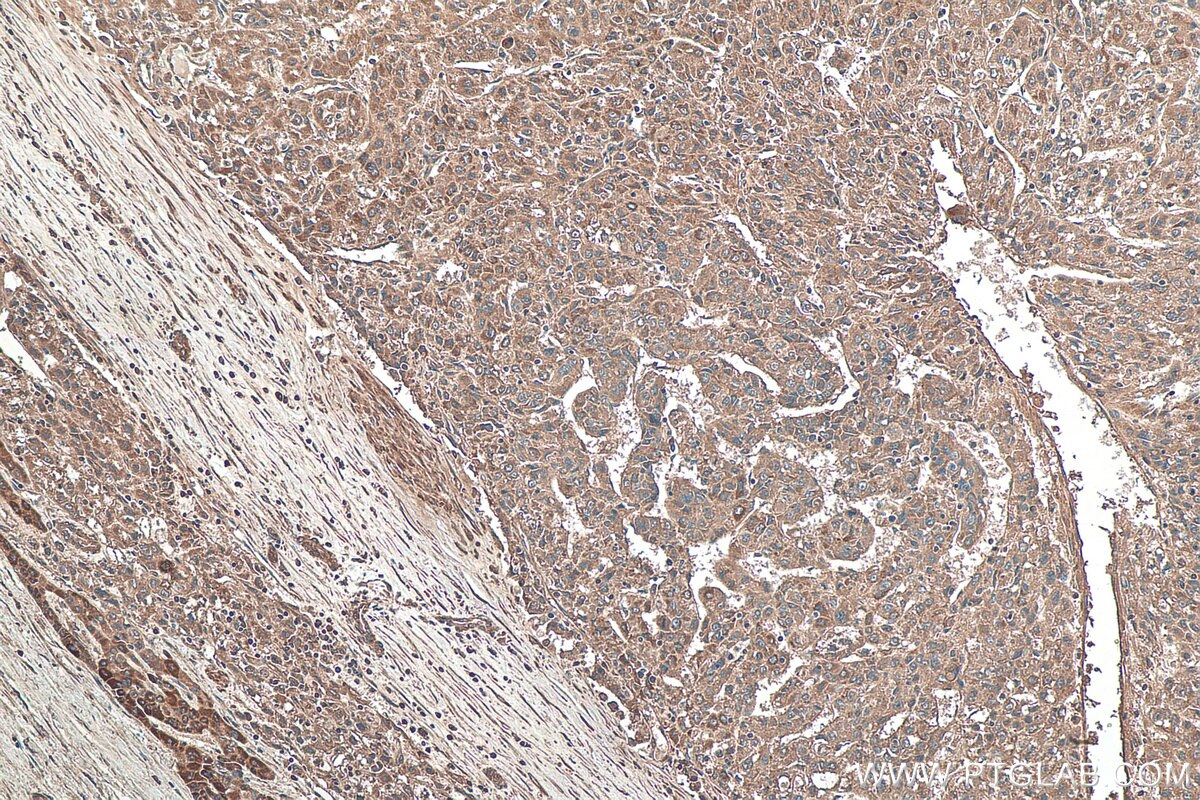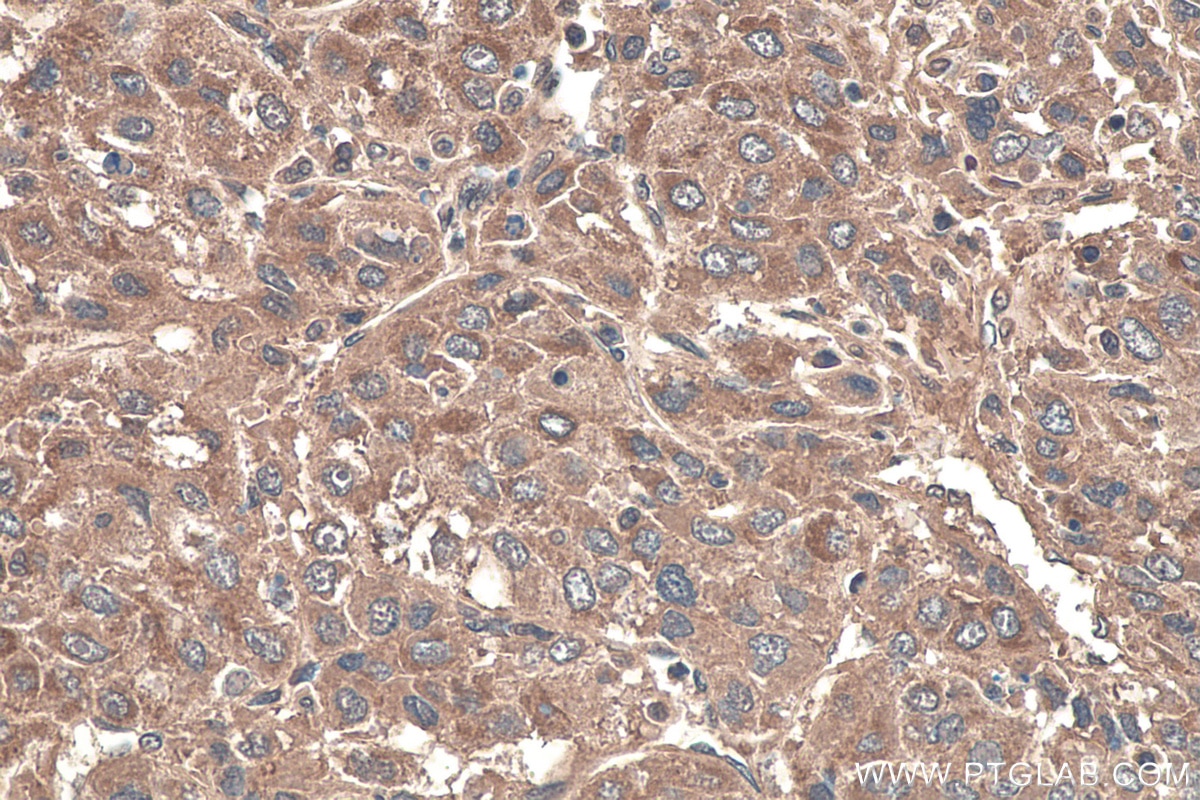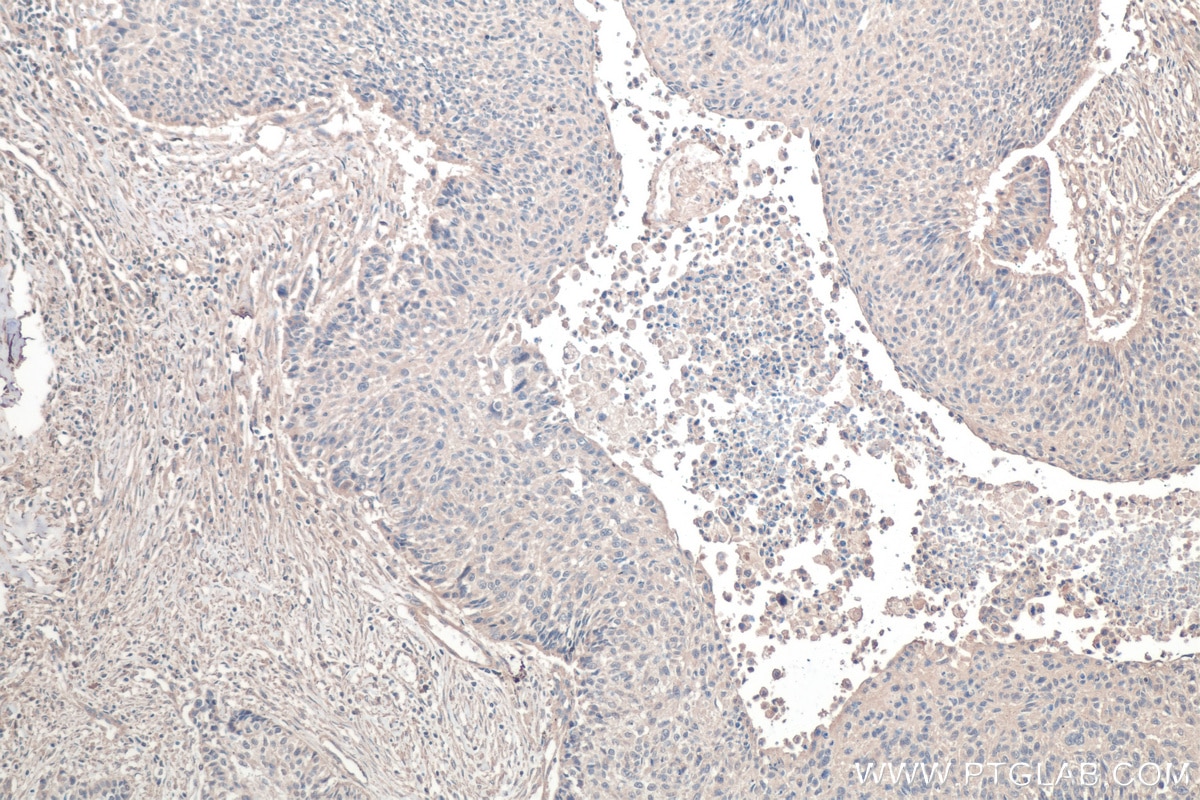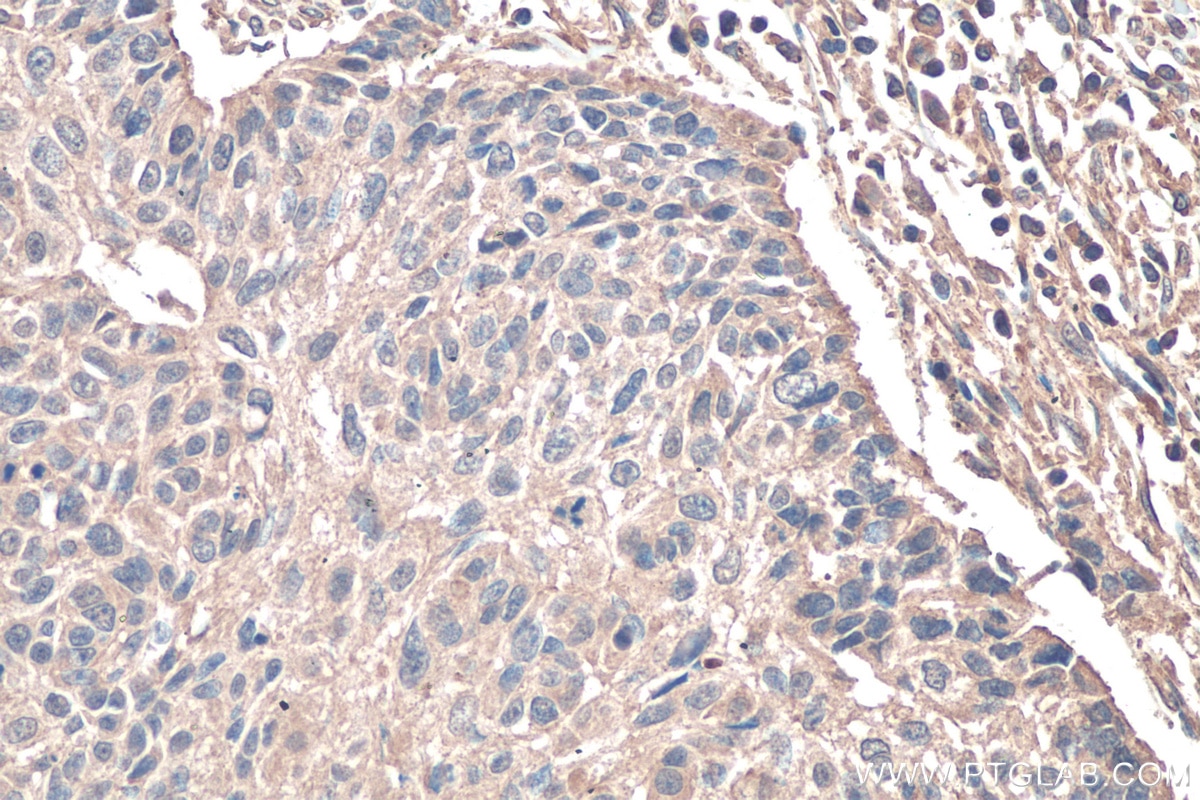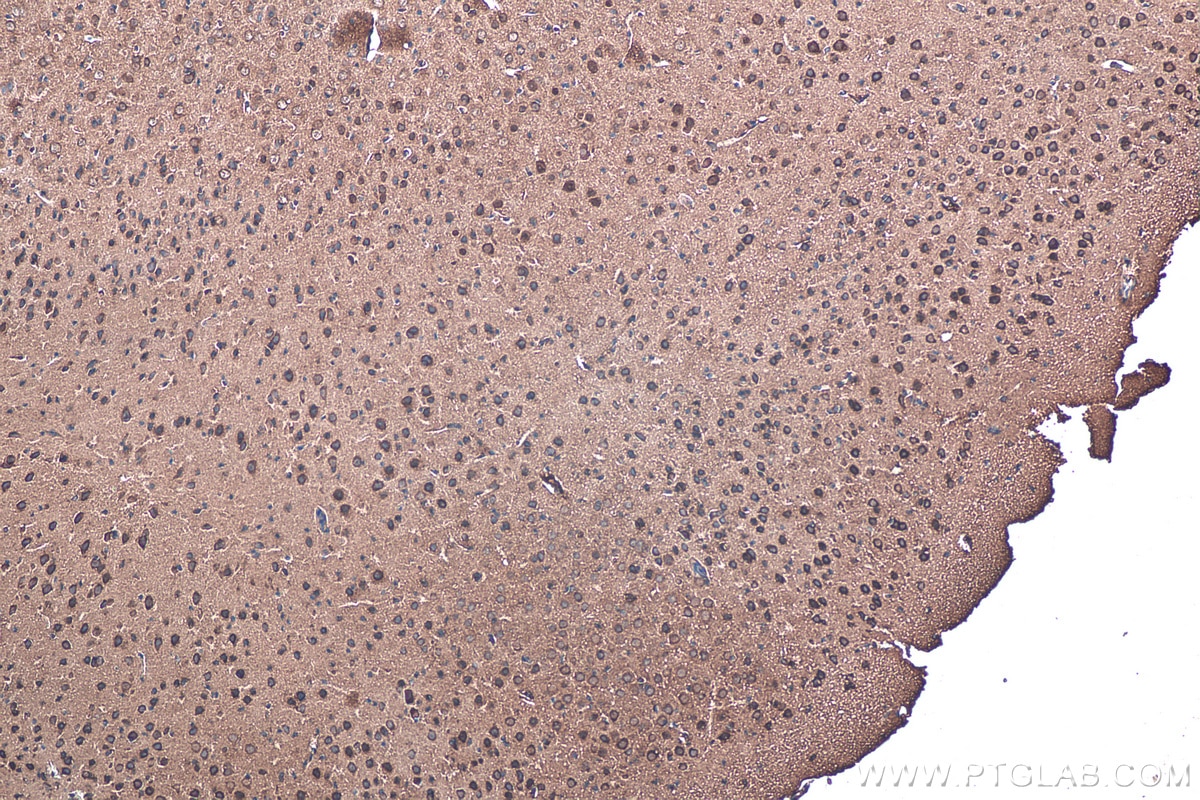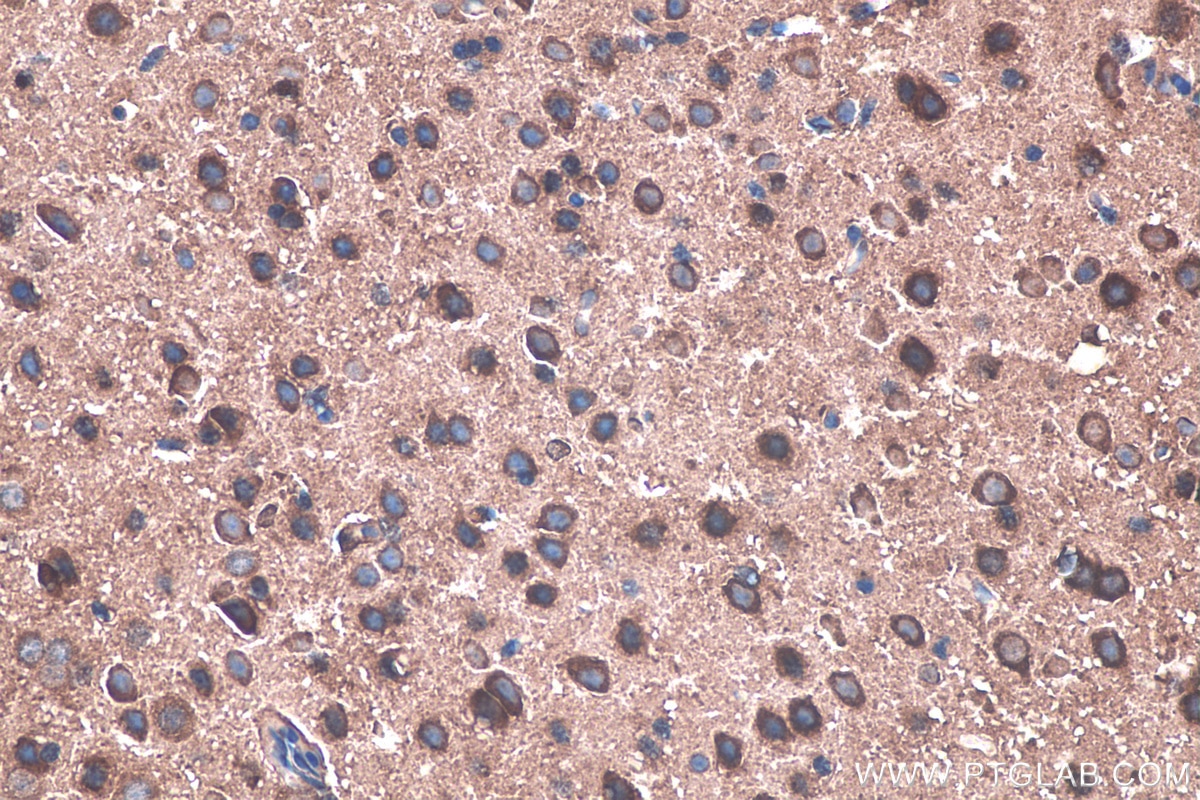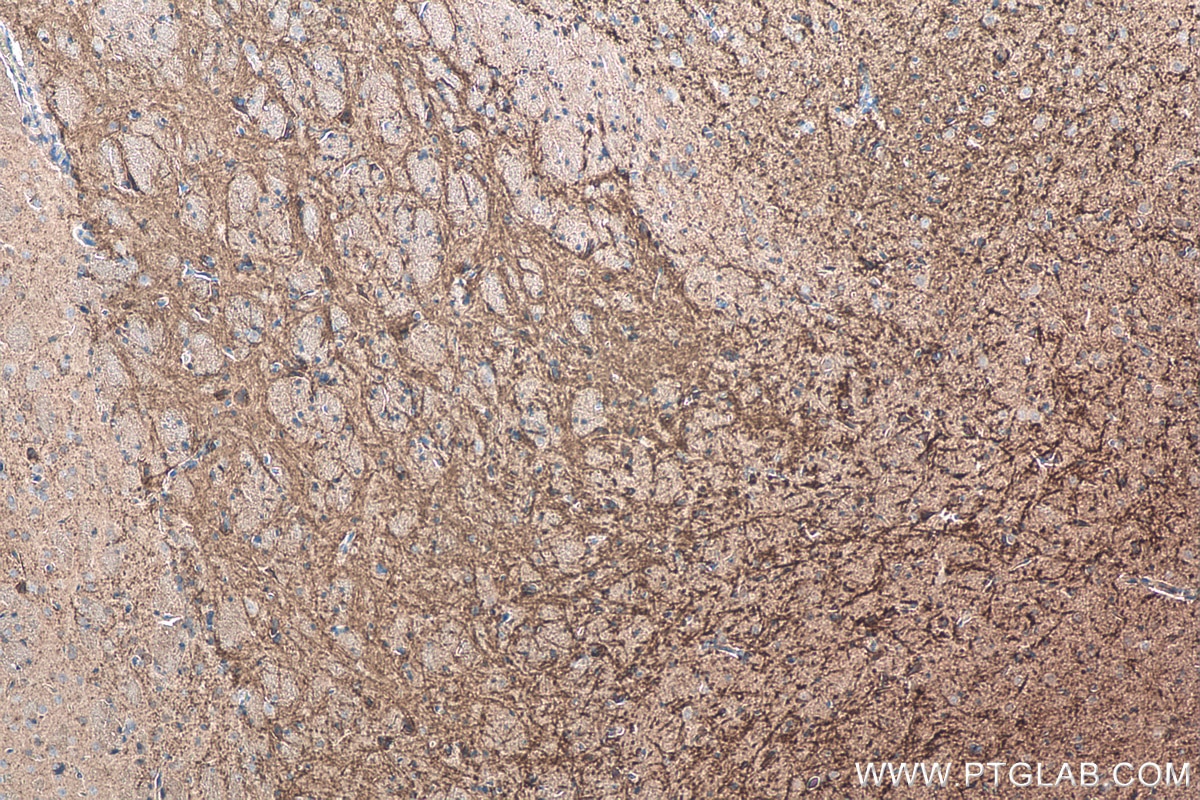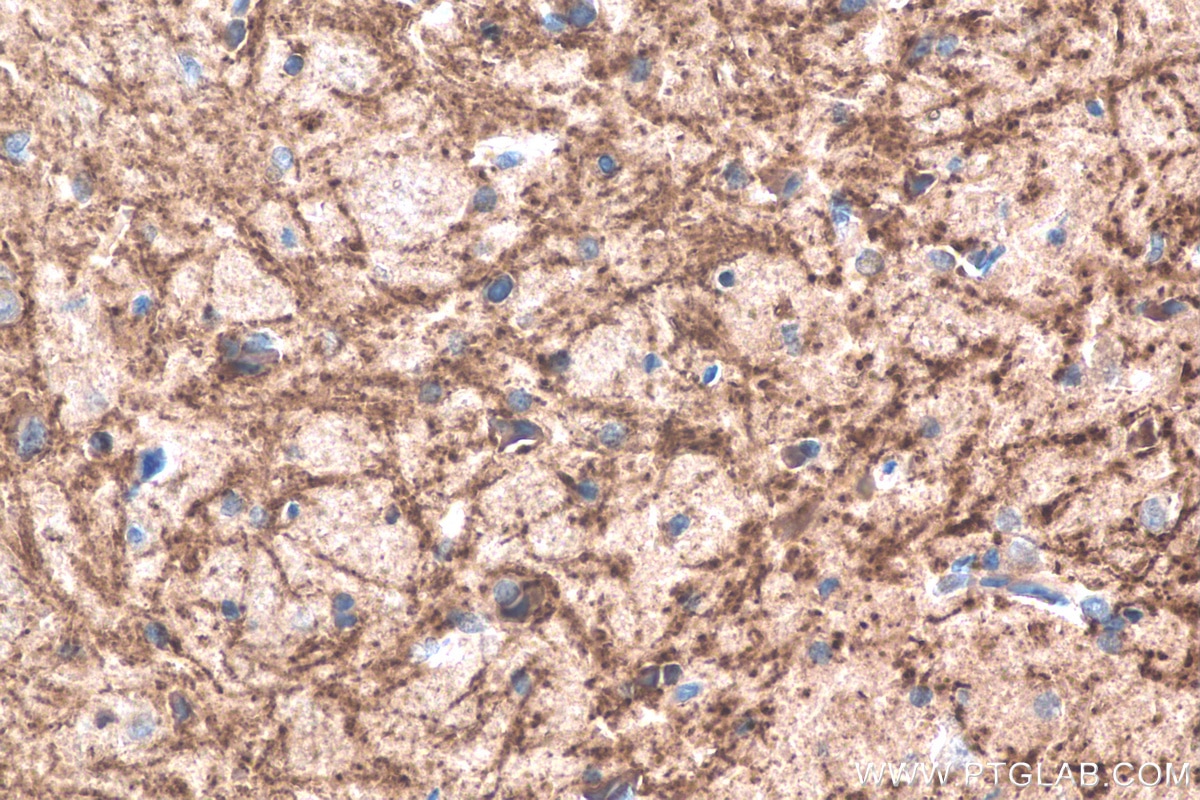Anticorps Monoclonal anti-TNC/Tenascin-C
TNC/Tenascin-C Monoclonal Antibody for IHC, WB, ELISA
Hôte / Isotype
Mouse / IgG1
Réactivité testée
Humain, rat, souris
Applications
WB, IHC, IF, ELISA
Conjugaison
Non conjugué
CloneNo.
1F7G8
N° de cat : 67710-1-Ig
Synonymes
Galerie de données de validation
Applications testées
| Résultats positifs en WB | tissu cérébral de rat, cellules HEK-293, tissu cérébral de souris, tissu de cervelet de rat |
| Résultats positifs en IHC | tissu de cancer du sein humain, tissu cérébral de rat, tissu cérébral de souris, tissu de cancer du foie humain, tissu de cancer du poumon humain il est suggéré de démasquer l'antigène avec un tampon de TE buffer pH 9.0; (*) À défaut, 'le démasquage de l'antigène peut être 'effectué avec un tampon citrate pH 6,0. |
Dilution recommandée
| Application | Dilution |
|---|---|
| Western Blot (WB) | WB : 1:2000-1:10000 |
| Immunohistochimie (IHC) | IHC : 1:500-1:2000 |
| It is recommended that this reagent should be titrated in each testing system to obtain optimal results. | |
| Sample-dependent, check data in validation data gallery | |
Applications publiées
| WB | See 4 publications below |
| IHC | See 2 publications below |
| IF | See 2 publications below |
Informations sur le produit
67710-1-Ig cible TNC/Tenascin-C dans les applications de WB, IHC, IF, ELISA et montre une réactivité avec des échantillons Humain, rat, souris
| Réactivité | Humain, rat, souris |
| Réactivité citée | rat, Humain, souris |
| Hôte / Isotype | Mouse / IgG1 |
| Clonalité | Monoclonal |
| Type | Anticorps |
| Immunogène | TNC/Tenascin-C Protéine recombinante Ag21412 |
| Nom complet | tenascin C |
| Masse moléculaire calculée | 2201 aa, 241 kDa |
| Poids moléculaire observé | 260 kDa |
| Numéro d’acquisition GenBank | BC151843 |
| Symbole du gène | TNC |
| Identification du gène (NCBI) | 3371 |
| Conjugaison | Non conjugué |
| Forme | Liquide |
| Méthode de purification | Purification par protéine G |
| Tampon de stockage | PBS avec azoture de sodium à 0,02 % et glycérol à 50 % pH 7,3 |
| Conditions de stockage | Stocker à -20°C. Stable pendant un an après l'expédition. L'aliquotage n'est pas nécessaire pour le stockage à -20oC Les 20ul contiennent 0,1% de BSA. |
Informations générales
Tenascin-C (TNC) is a large hexameric extracellular matrix glycoprotein of the tenascin family (PMID: 21818551). It is a multimodular protein containing multiple epidermal growth factor (EGF)-like repeats and fibronectin type III (FN III) domains (PMID: 1719530). Tenascin-C is highly expressed during embryonic development, particularly in the developing central nervous system, around motile cells and at epithelial-mesenchymal interaction sites (PMID: 25738825). In adult tissues, the expression and the distribution of TNC are typically limited under normal physiological conditions. It is upregulated during injury, inflammation, regeneration, and cancer (PMID: 7694605; 25120494). Tenascin-C is a diverse protein that can produce different functions including regulating cell adhesion, migration and proliferation.
Protocole
| Product Specific Protocols | |
|---|---|
| WB protocol for TNC/Tenascin-C antibody 67710-1-Ig | Download protocol |
| IHC protocol for TNC/Tenascin-C antibody 67710-1-Ig | Download protocol |
| Standard Protocols | |
|---|---|
| Click here to view our Standard Protocols |
Publications
| Species | Application | Title |
|---|---|---|
Oxid Med Cell Longev Eugenol-Preconditioned Mesenchymal Stem Cell-Derived Extracellular Vesicles Promote Antioxidant Capacity of Tendon Stem Cells In Vitro and In Vivo. | ||
Acta Biomater Rejuvenation of tendon stem/progenitor cells for functional tendon regeneration through platelet-derived exosomes loaded with recombinant Yap1 | ||
Front Endocrinol (Lausanne) Identification of diagnostic markers related to oxidative stress and inflammatory response in diabetic kidney disease by machine learning algorithms: Evidence from human transcriptomic data and mouse experiments | ||
Cell Death Dis CEBPD is a master transcriptional factor for hypoxia regulated proteins in glioblastoma and augments hypoxia induced invasion through extracellular matrix-integrin mediated EGFR/PI3K pathway | ||
Mol Biotechnol NT-3 Combined with TGF-β Signaling Pathway Enhance the Repair of Spinal Cord Injury by Inhibiting Glial Scar Formation and Promoting Axonal Regeneration | ||
J Nanobiotechnology 3D-printed hydrogel particles containing PRP laden with TDSCs promote tendon repair in a rat model of tendinopathy |
Avis
The reviews below have been submitted by verified Proteintech customers who received an incentive forproviding their feedback.
FH Balawant (Verified Customer) (12-02-2022) | This antibody is great for western blot as well as for Immunofluorescence.
|
